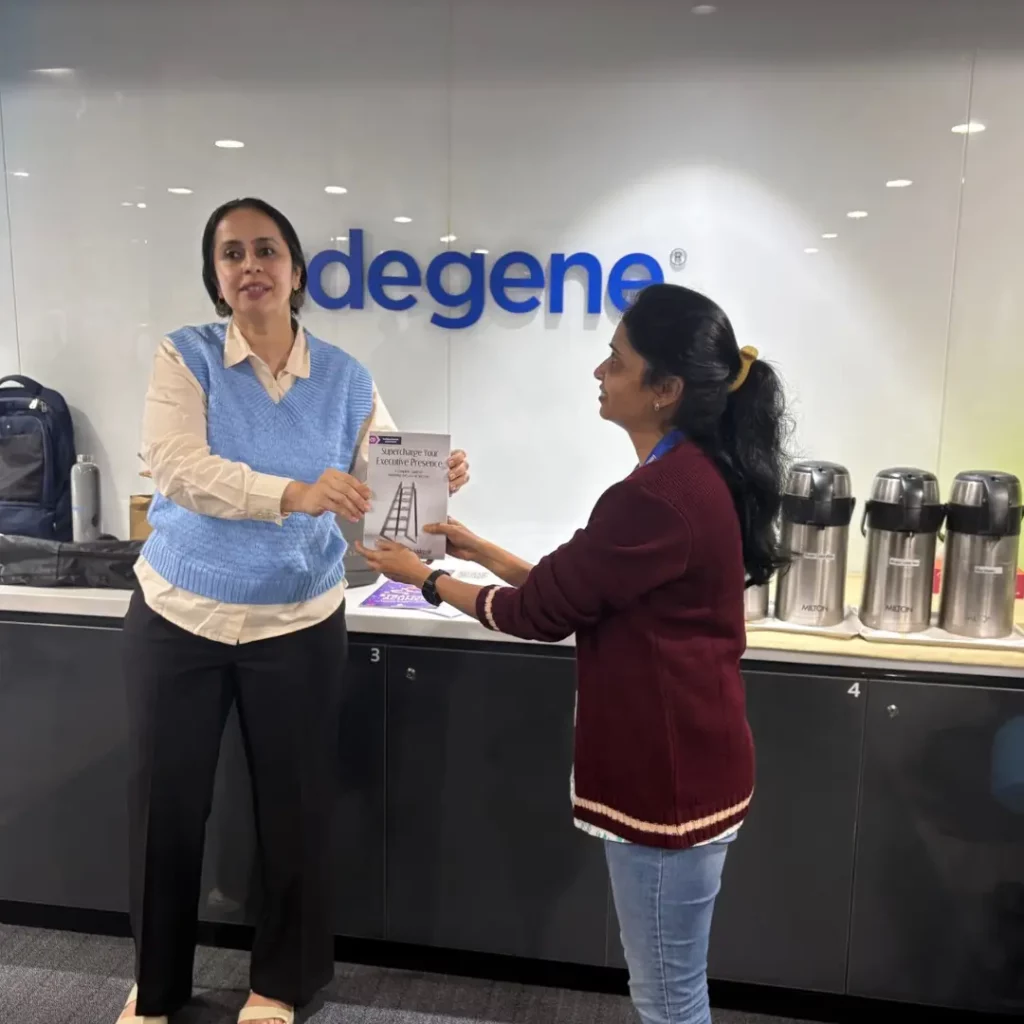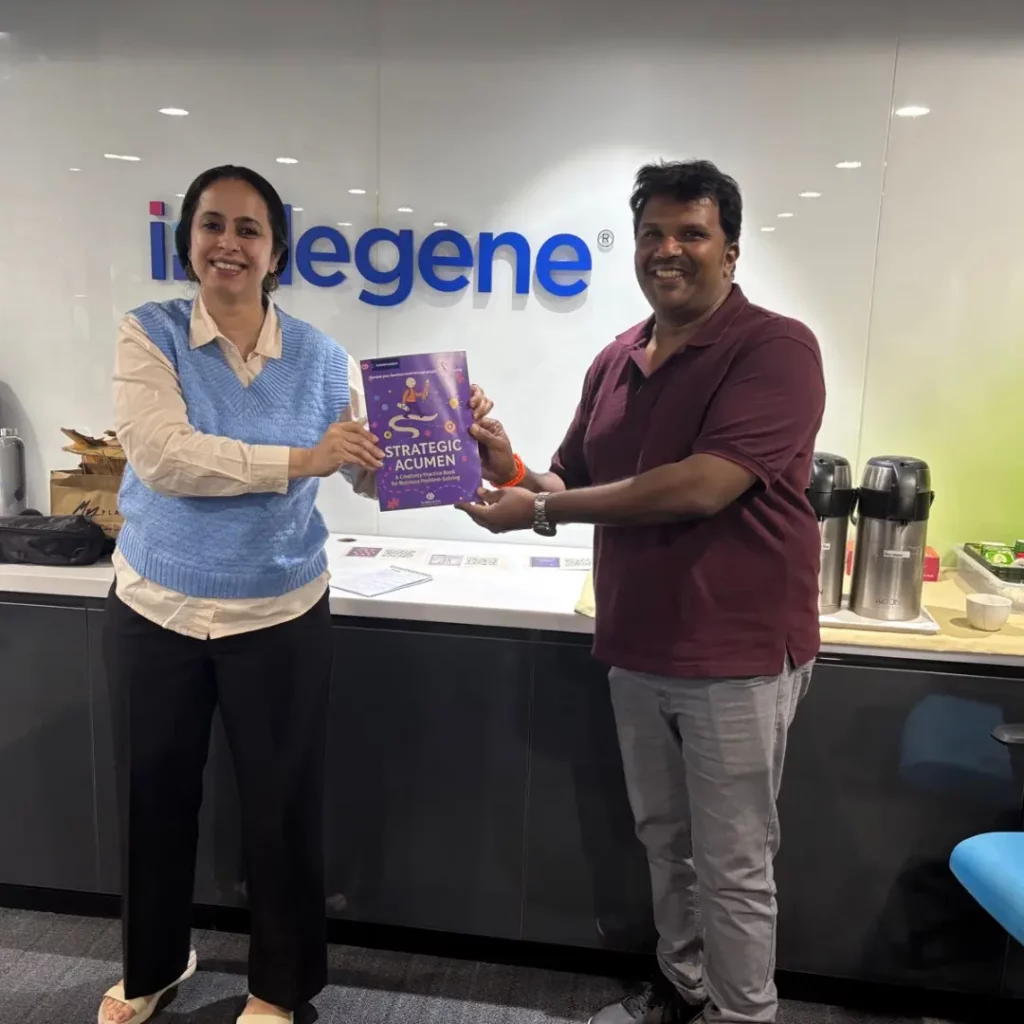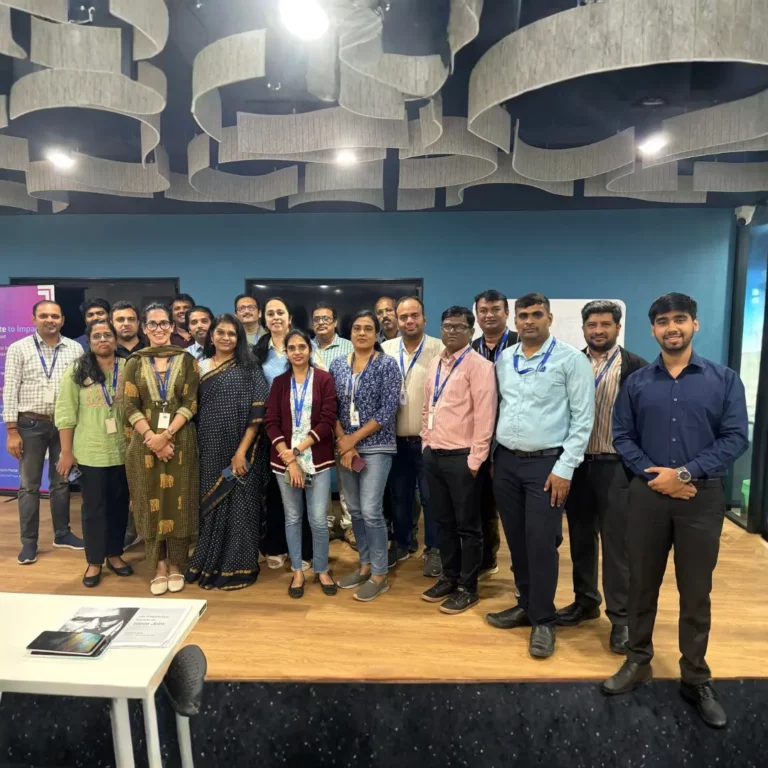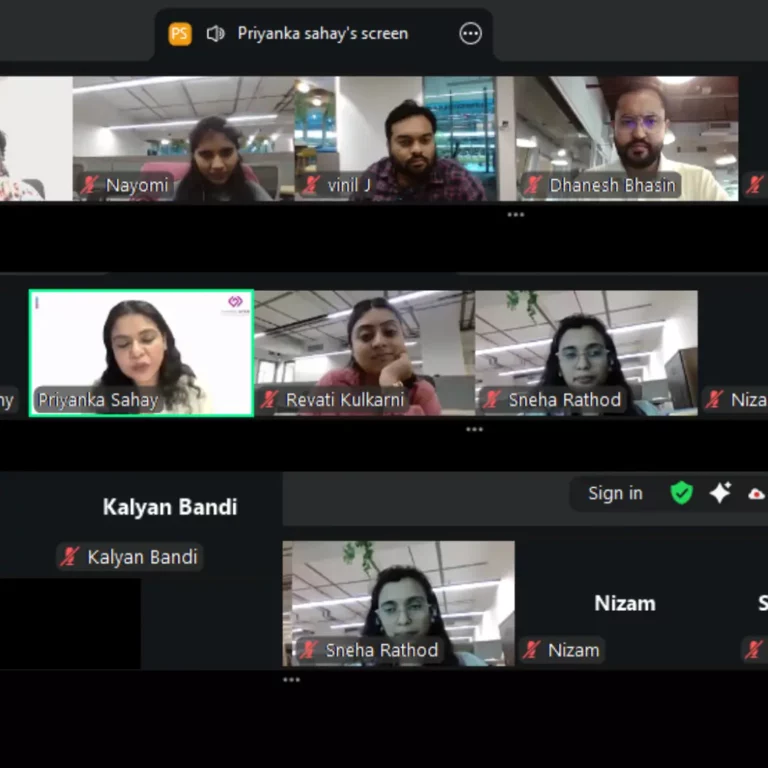Impactful Communication and Presence @ Leading Healthcare Solutions Firm
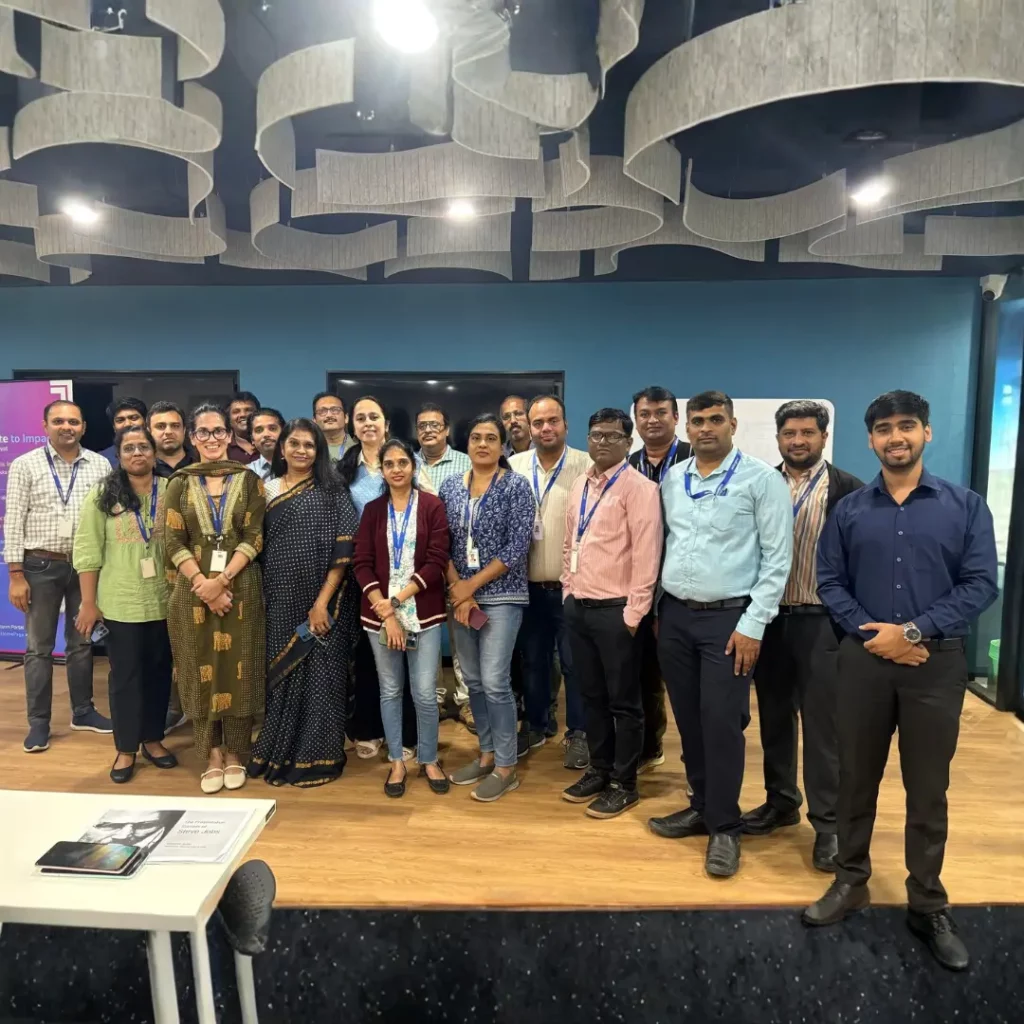
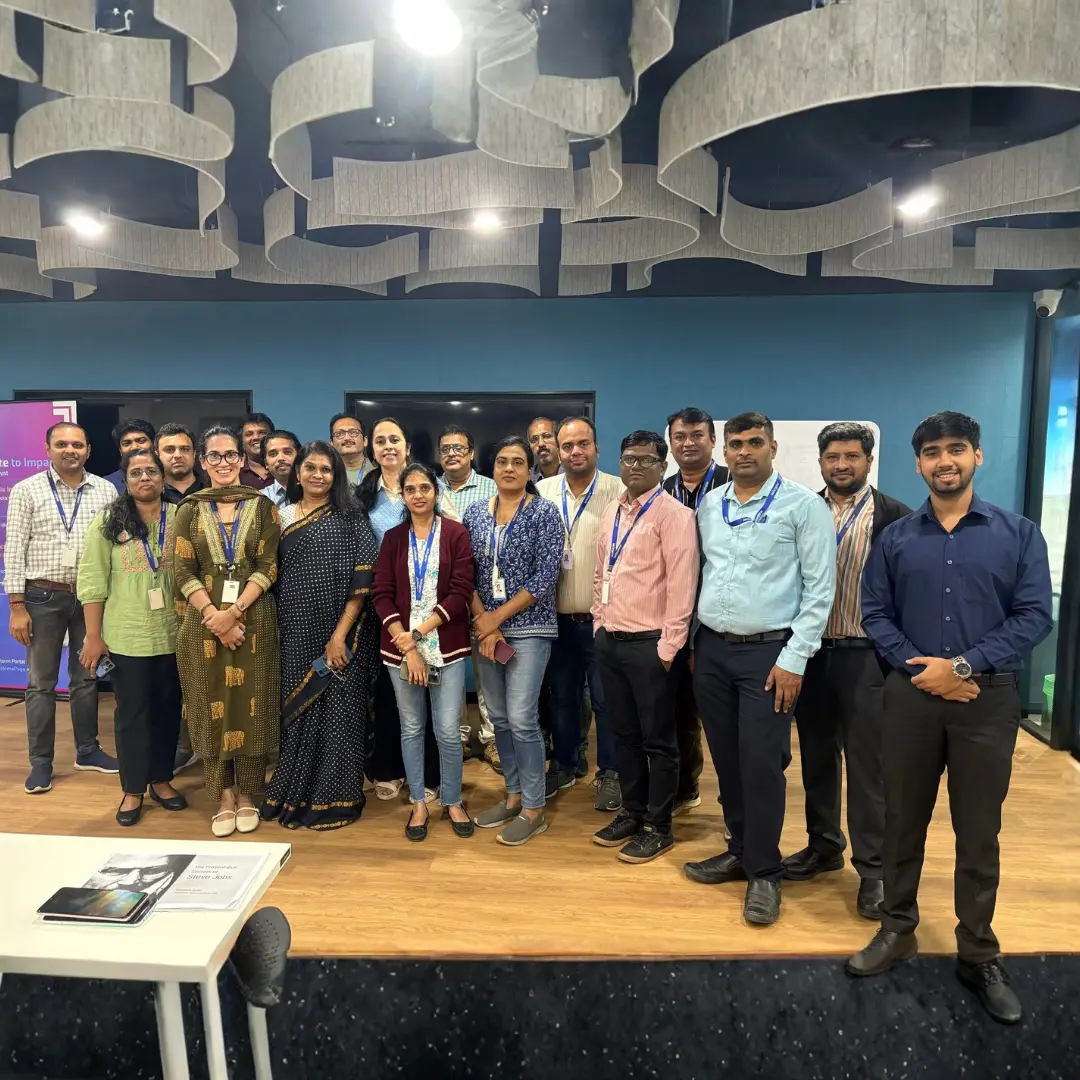
Client
Context
In the healthcare solutions industry, technical expertise and strategic insights mean nothing if they can’t be communicated effectively. Mid-senior leaders often possess deep knowledge and innovative ideas, yet struggle to command attention in critical business conversations, influence decisions across organizational hierarchies, or present themselves with the executive presence that inspires confidence. This gap between competence and communication impact can derail careers and limit organizational effectiveness—brilliant strategies remain unimplemented, valuable insights go unheard, and talented leaders get overlooked for advancement.
A leading healthcare solutions firm recognized that communication capability wasn’t just a nice-to-have soft skill—it was a strategic imperative for their mid-senior leaders who needed to influence complex stakeholder networks, win client confidence, and drive internal alignment across global teams and diverse functions.
Client
Objective
The organization’s objective was to create an intensive, high-impact intervention that would transform how their leaders communicated in the moments that mattered most. They needed managers who could build authentic executive presence, elevate message clarity to cut through information overload, and influence with confidence in critical business conversations—whether presenting to senior leadership, negotiating with clients, or aligning cross-functional teams. The solution had to deliver immediate, practical improvement that participants could apply the very next day in their high-stakes professional interactions.
Program Design
- Delivery Approach: High-energy, interactive workshop design that combined theoretical frameworks with intensive practical application, ensuring participants didn’t just understand concepts but actually practiced and refined new skills.
- Learning Methodology: Experiential learning through live practice sessions where participants delivered presentations and communication exercises, receiving immediate feedback from both faculty and peers in a supportive yet challenging environment.
- Real-World Application: Participants worked on actual business scenarios and upcoming presentations from their own work contexts, ensuring every exercise directly translated into improved performance in real professional situations.
- Safe Practice Environment: The workshop created a psychologically safe space where leaders could experiment with new communication approaches, take calculated risks, make mistakes, and receive honest constructive feedback without career consequences.
- Video Recording and Analysis: Selected sessions were recorded to enable participants to observe their own communication patterns, body language, and presence—creating powerful self-awareness moments that accelerated improvement.
- Personalized Feedback: Each participant received individualized coaching on their specific communication strengths and development areas, with concrete action steps for continued improvement beyond the workshop.
Key Themes Covered
1. Storytelling with Impact
Participants learned to transform dry facts and data into compelling narratives that captured attention and drove action. The focus was on understanding story structure, emotional resonance, and strategic narrative choices that made messages memorable and persuasive in both client presentations and internal business conversations.
2. Communicating with Clarity and Conviction
Leaders developed techniques for distilling complex healthcare solutions concepts into clear, confident messages that resonated with diverse audiences. This included mastering the balance between comprehensiveness and conciseness—knowing what to include, what to omit, and how to deliver messages with unwavering conviction that inspired confidence.
3. Presence in Formal and Informal Settings
The program addressed the nuanced differences between executive presence in formal presentations versus informal corridor conversations, client dinners, and impromptu discussions. Participants learned to maintain credibility and influence across these varied contexts, understanding how to adapt their communication style while maintaining authenticity.
4. Influencing Across Hierarchies
Leaders gained practical strategies for influencing upward, downward, and laterally within complex organizational structures—critical for healthcare solutions professionals who must align stakeholders at multiple levels. The focus was on building influence through communication rather than relying solely on positional authority or technical expertise.
5. Using Narratives for Internal and External Communication
Participants learned to craft different narrative approaches for internal team alignment versus external client engagement, understanding how to adapt storytelling techniques to different audiences while maintaining message consistency and personal authenticity throughout varied communication contexts.
Looking to build a customized leadership journey? We're here to help!
- Tailored Corporate Leadership Programs
- Outcome-Oriented Learning
- Gamified Assessments & Experiential Engagements

